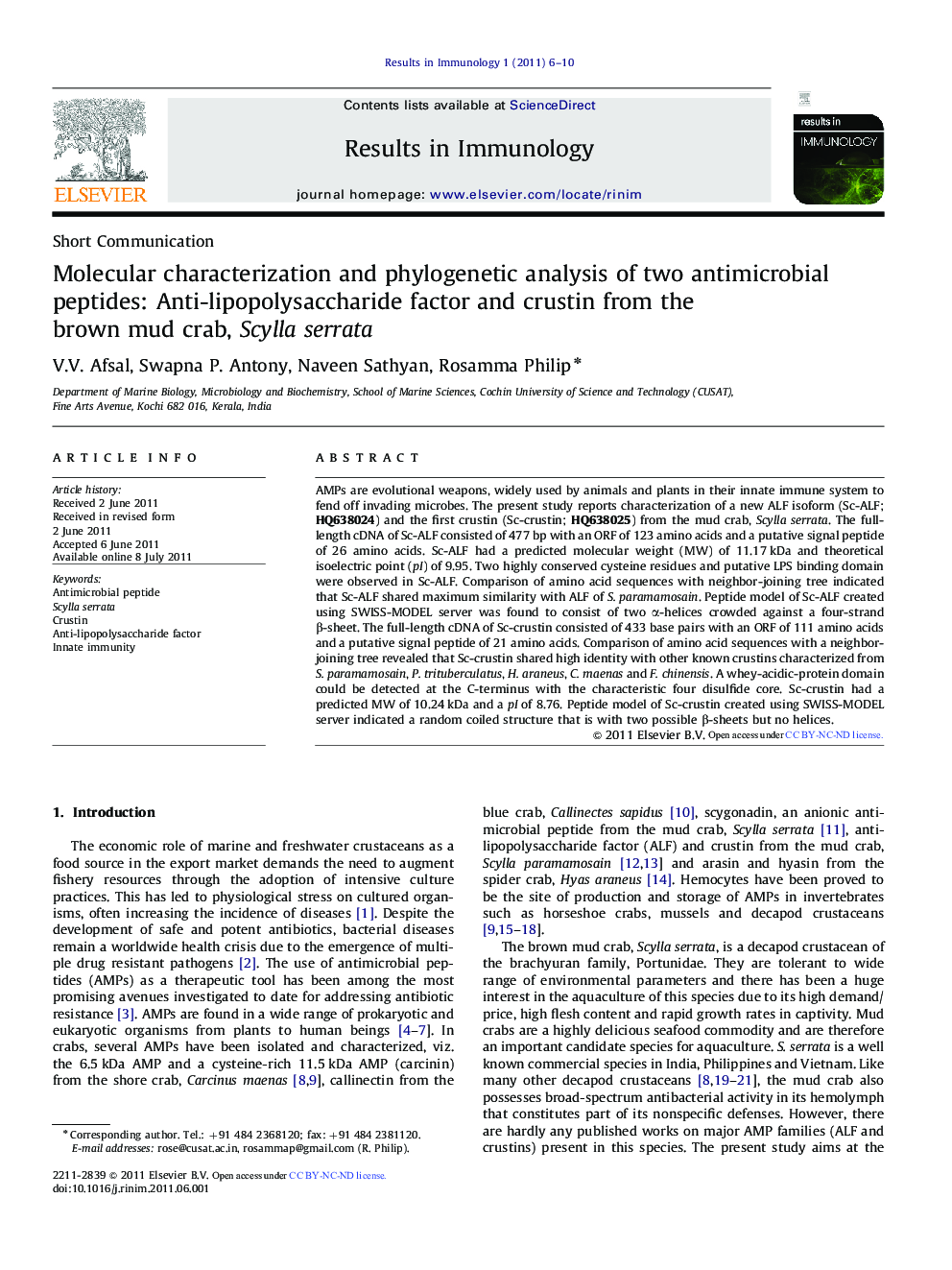| Article ID | Journal | Published Year | Pages | File Type |
|---|---|---|---|---|
| 2202402 | Results in Immunology | 2011 | 5 Pages |
AMPs are evolutional weapons, widely used by animals and plants in their innate immune system to fend off invading microbes. The present study reports characterization of a new ALF isoform (Sc-ALF; HQ638024) and the first crustin (Sc-crustin; HQ638025) from the mud crab, Scylla serrata. The full-length cDNA of Sc-ALF consisted of 477 bp with an ORF of 123 amino acids and a putative signal peptide of 26 amino acids. Sc-ALF had a predicted molecular weight (MW) of 11.17 kDa and theoretical isoelectric point (pI) of 9.95. Two highly conserved cysteine residues and putative LPS binding domain were observed in Sc-ALF. Comparison of amino acid sequences with neighbor-joining tree indicated that Sc-ALF shared maximum similarity with ALF of S. paramamosain. Peptide model of Sc-ALF created using SWISS-MODEL server was found to consist of two α-helices crowded against a four-strand β-sheet. The full-length cDNA of Sc-crustin consisted of 433 base pairs with an ORF of 111 amino acids and a putative signal peptide of 21 amino acids. Comparison of amino acid sequences with a neighbor-joining tree revealed that Sc-crustin shared high identity with other known crustins characterized from S. paramamosain, P. trituberculatus, H. araneus, C. maenas and F. chinensis. A whey-acidic-protein domain could be detected at the C-terminus with the characteristic four disulfide core. Sc-crustin had a predicted MW of 10.24 kDa and a pI of 8.76. Peptide model of Sc-crustin created using SWISS-MODEL server indicated a random coiled structure that is with two possible β-sheets but no helices.
► Study reports an ALF isoform and the first crustin sequence from Scylla serrata. ► Sc-ALF has a predicted MW of 11.17 kDa and theoretical pI of 9.95. ► Highly conserved cysteine residues and LPS binding domain were observed in Sc-ALF. ► Sc-crustin shared 81% identity with the crustin from Scylla paramamosain. ► Sc-crustin has a predicted MW of 10.24 kDa and a theoretical pI of 8.
